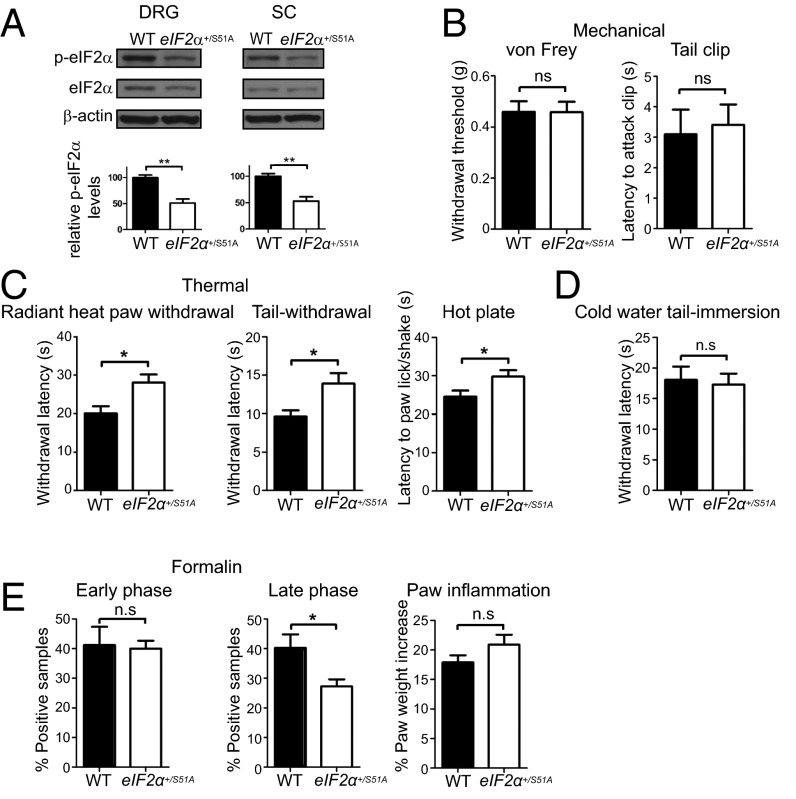Fig. 2.
Noxious heat sensation is reduced in eIF2α+/S51A mice. (A) eIF2α phosphorylation is reduced in DRGs and spinal cord of eIF2α+/S51A mice. eIF2α+/S51A mice demonstrate no alterations in mechanical sensitivity (B; n = 4 males and 4 females per genotype, P > 0.05), whereas noxious heat sensation is significantly attenuated (C; n = 4 males and 4 females per genotype per assay, P < 0.05). (D) Sensitivity to cold is not changed in eIF2α+/S51A mice (n = 4 males and 6 females per genotype). (E) Nocifensive (licking/shaking) behavior is significantly reduced in formalin test during the late/tonic phase (10–60 min after formalin injection, P < 0.05), whereas no differences are found in the early/acute phase (n = 4 males and 4 females per genotype). Changes in paw weight, indicative of formalin-induced inflammation, are not different in eIF2α+/S51A mice (E, Right; P > 0.05). Data are presented as mean ± SEM. *P < 0.05, **P < 0.01; ns, not significant by Student t test.

